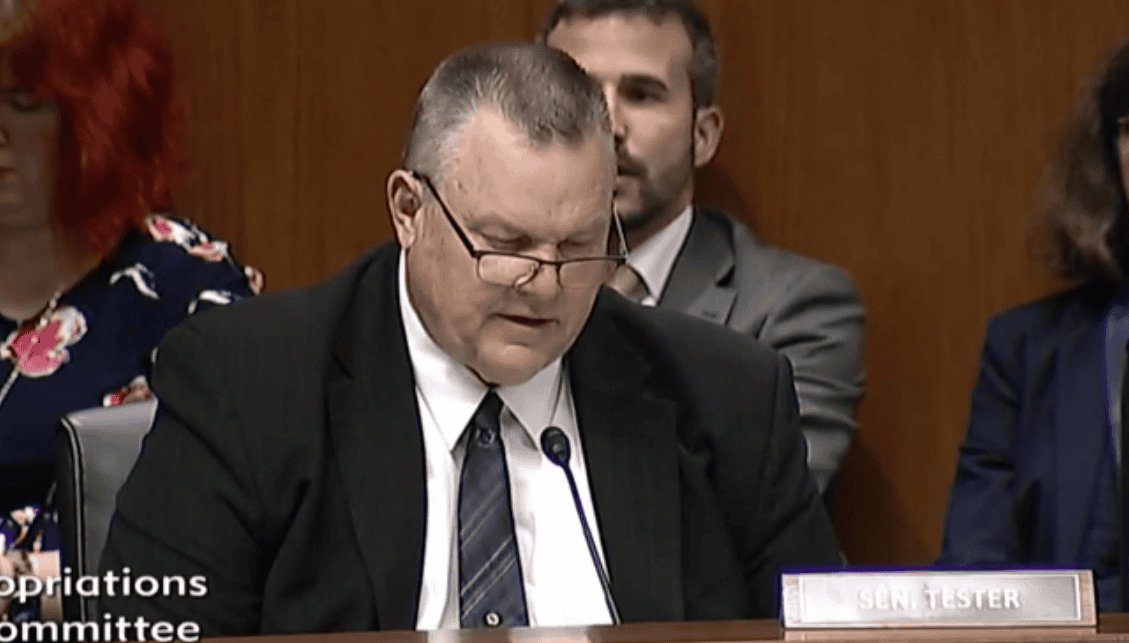I’m working off the discussion draft here.
The idea is to designate firesheds.
are identified as being in the top 20 percent of firesheds for wildfire expo6 sure based on the following criteria:
Wildfire exposure to communities, including risk to structures and life.
Wildfire exposure to municipal watersheds.
Risk of forest conversion due to wildfire.
shall not overlap with any other fireshed management areas;
may contain Federal and non Federal land; and where the Secretary concerned shall carry out fireshed management 20 projects.
I am not a fan of the “risk of forest conversion” criterion..seems to me (given my background in refo practices) that where there are trees, with appropriate practices you can get trees back. Plus with lots of bucks at stake, this could lead to a great deal of..err.. creativity
Agencies Get Their Stuff Together
The Bill would establish a Center where agencies would coordinate efforts. Which ones?
The Forest Service.
8 (B) The Bureau of Land Management.
9 (C) The National Park Service.
10 (D) The Bureau of Indian Affairs.
11 (E) The U.S. Fish and Wildlife Service.
12 (F) The U.S. Geological Survey.
13 (G) The Department of Defense.
14 (H) The Department of Homeland Security.
16 (I) The Department of Energy.
17 (J) The Federal Emergency Management Agency.
19 (K) National Science Foundation.
20 (L) The National Oceanic and Atmospheric Administration.
22 (M) The National Aeronautics and Space Administration.
24 (N) The National Institute of Standards and Technology.
What Would the Center Do?
The purposes of the Center are to—
13 (1) comprehensively assess and predict fire in 14 the wildland and built environment interface through 15 data aggregation and science-based decision support services;
17 (2) reduce fragmentation and duplication across Federal land management agencies with respect to predictive service and decision support functions related to wildland fire;
I’d strike “land management”..it’s likely that NASA NOAA NSF and DOE are all feeding at the prediction and decision support modeling research funding trough.
21 (3) promote interorganizational coordination
22 and sharing of data regarding wildland fire decision making;1 (4) streamline procurement processes and cybersecurity systems related to addressing wildland fire;
Not sure what problem that is intended to address but it sounds interesting…
4 (5) provide publicly accessible data, models, technologies, assessments, and fire weather forecasts 6 to support short- and long-term planning regarding wildland fire and post-fire recovery; and 8 (6) maintain the Fireshed Registry created 9 under section 103.
I’d add open (including practitioner) peer review of models, technologies and assessments, including involvement of practitioners in modeling, technology development and assessment.
Fireshed Registry Data (interactive spatial)
(a) FIRESHED REGISTRY.—The Secretary of Agri17 culture, acting through the Director of the Fireshed Cen18 ter appointed under section 102, shall maintain a Fireshed 19 Registry on a publicly accessible website that provides 20 interactive geospatial data on individual firesheds, including information on—
22 (1) wildfire exposure delineated by ownership,23 including rights-of-way for utilities and other public 24 or private purposes;
1 (2) any hazardous fuels reduction treatments 2 that have occurred within an individual fireshed in 3 the past 10 years;
4 (3) wildfire exposure delineated by—
5 (A) wildfire exposure to communities, including risk to structures and life;
7 (B) wildfire exposure to municipal watersheds; and
9 (C) risk of forest conversion due to wild10 fire;
11 (4) the percentage of the fireshed that has 12 burned in wildfires in the past 10 years, including, 13 to the extent practicable, delineations of acres that 14 have burned at a high severity;
15 (5) spatial patterns of wildfire exposure, including plausible extreme fire events; and
17 (6) any hazardous fuels reduction treatments 18 planned for the fireshed, including fireshed management projects under section 106 of this Act
This almost sounds like an assessment for a fire plan amendment..whoops.. Section 105 is.. Fireshed Assessments.
Then there’s a Peoples’ Permitting Database
(1) publish fireshed assessments created under 5 section 105; and
6 (2) maintain a searchable database to track—7 (A) the status of Federal environmental reviews, permits, and authorizations for specific fireshed management projects conducted under
10 section 106, including—
11 (i) a comprehensive permitting timetable;
13 (ii) the status of the compliance of each lead agency, cooperating agency, and participating agency with the permitting timetable;
17 (iii) any modifications of the permitting timetable required under clause (i), in1cluding an explanation as to why the permitting timetable was modified; and
21 (iv) information about project-related public meetings, public hearings, and public comment periods, which shall be presented in English and the predominant
25 language of the community or communities most affected by the project, as that information becomes available;
3 (B) the projected cost of fireshed management projects; and
5 (C) the effectiveness of completed fireshed management projects in reducing the wildfire exposure within an applicable fireshed, including—
9 (i) wildfire exposure to communities, including risk to structures and life;
11 (ii) wildfire exposure to municipal watersheds; and
13 (iii) risk of forest conversion due to wildfire.
Now, the NEPA part is confusing to a new reader.
If a project is identified through the Assessment and falls into these (pretty broad) categories..
2) FIRESHED MANAGEMENT PROJECTS.—The 4 responsible official shall carry out the following for5 est management activities as fireshed management projects under this section:
7 (A) Conducting hazardous fuels manage8 ment, including mechanical thinning, prescribed 9 burning, cultural burning, timber harvest, masication, and grazing.
11 (B) Creating fuel breaks and fire breaks.
12 (C) Removing hazard trees, dead trees, dying trees, or trees at risk of dying, as determined by the responsible official.
15 (D) Developing, approving, or conducting routine maintenance under a vegetation management, facility inspection, and operation and
18 maintenance plan submitted under section 19 512(c)(1) of the Federal Land Policy and Management Act of 1976 (43 U.S.C. 1772(c)(1)).
21 (E) Removing trees to address overstocking or crowding in a forest stand, consistent with the appropriate basal area of the forest stand as determined by the responsible 25 official.
1 (F) Using chemical treatments to address insects and disease and control vegetation competition or invasive species.
4 (G) Any activities recommended by the state-specific fireshed assessment carried out under section 105.
7 (H) Any activities recommended by an applicable community wildfire protection plan.
9 (I) Any combination of activities described 10 in this paragraph.
Our lawyer friends probably know the CFRs under emergency fireshed management on page 21. Section B on page 22 talks about using existing CE authorities under HFRA, the Lake Tahoe CE, and the IIJA CE’s. It also seems to replace the Emergency Situation Determination described in IIJA with projects identified in the assessment. The practical result seems to be no objection process and this clause:
A court shall not enjoin an authorized emergency action under this section if the court determines that the plaintiff is unable to demonstrate that the claim of the plaintiff is likely to succeed on the merits.
*********
The bill also adds Indian Tribes to getting funding from Good Neighbor Authority projects (I thought this had been done a while back, but I guess not).
Intra Agency Strike Teams. I read about this and they sounded like inter-agency strike teams, to facilitate coordination so I was confused.
*************
This is getting long so I will start another post..Subtitle C- Addressing Frivolous Litigation is the next topic.







